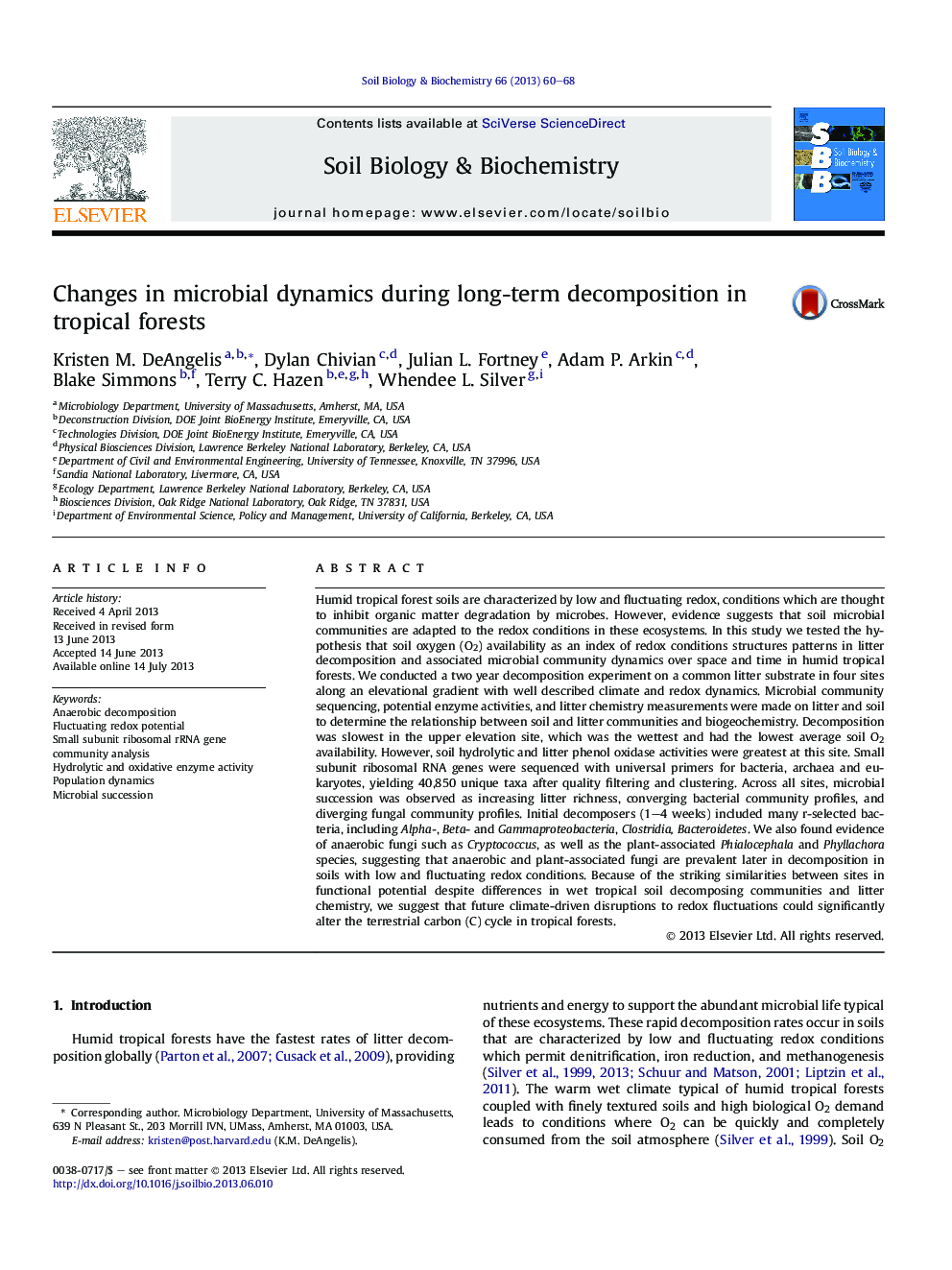| کد مقاله | کد نشریه | سال انتشار | مقاله انگلیسی | نسخه تمام متن |
|---|---|---|---|---|
| 2024682 | 1542618 | 2013 | 9 صفحه PDF | دانلود رایگان |

• We conducted a 2 year litter decomposition experiment in 4 wet tropical forest sites.
• Sites sat along a gradient with well described climate and redox dynamics.
• Litter decomposition under fluctuating redox proceeded as quickly as the aerobic site.
• Succession on litter emerged as converging bacterial but diverging fungal communities.
Humid tropical forest soils are characterized by low and fluctuating redox, conditions which are thought to inhibit organic matter degradation by microbes. However, evidence suggests that soil microbial communities are adapted to the redox conditions in these ecosystems. In this study we tested the hypothesis that soil oxygen (O2) availability as an index of redox conditions structures patterns in litter decomposition and associated microbial community dynamics over space and time in humid tropical forests. We conducted a two year decomposition experiment on a common litter substrate in four sites along an elevational gradient with well described climate and redox dynamics. Microbial community sequencing, potential enzyme activities, and litter chemistry measurements were made on litter and soil to determine the relationship between soil and litter communities and biogeochemistry. Decomposition was slowest in the upper elevation site, which was the wettest and had the lowest average soil O2 availability. However, soil hydrolytic and litter phenol oxidase activities were greatest at this site. Small subunit ribosomal RNA genes were sequenced with universal primers for bacteria, archaea and eukaryotes, yielding 40,850 unique taxa after quality filtering and clustering. Across all sites, microbial succession was observed as increasing litter richness, converging bacterial community profiles, and diverging fungal community profiles. Initial decomposers (1–4 weeks) included many r-selected bacteria, including Alpha-, Beta- and Gammaproteobacteria, Clostridia, Bacteroidetes. We also found evidence of anaerobic fungi such as Cryptococcus, as well as the plant-associated Phialocephala and Phyllachora species, suggesting that anaerobic and plant-associated fungi are prevalent later in decomposition in soils with low and fluctuating redox conditions. Because of the striking similarities between sites in functional potential despite differences in wet tropical soil decomposing communities and litter chemistry, we suggest that future climate-driven disruptions to redox fluctuations could significantly alter the terrestrial carbon (C) cycle in tropical forests.
Journal: Soil Biology and Biochemistry - Volume 66, November 2013, Pages 60–68